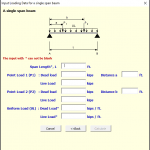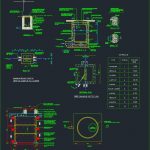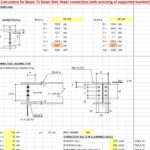you are here
Accueil | ENGINEERING ARTICLES | CAD & BIM | Deep Comparison: MicroStation vs. AutoCAD
Deep Comparison: MicroStation vs. AutoCAD
2 February 2025
By
The Engineering Community
Deep Comparison: MicroStation vs. AutoCAD
MicroStation and AutoCAD are two of the most widely used CAD (Computer-Aided Design) software solutions in engineering, architecture, and construction. While both serve similar functions, they cater to different workflows, industries, and user preferences. Let’s explore their differences in depth.
1. General Overview
| Feature |
MicroStation |
AutoCAD |
| Developer |
Bentley Systems |
Autodesk |
| Primary Use |
Infrastructure, civil engineering, large-scale projects |
General-purpose CAD, architectural, mechanical, and electrical design |
| File Format |
DGN (default), can import/export DWG |
DWG (default), supports DGN import/export |
| User Interface |
More complex, customizable UI |
More intuitive, widely adopted UI |
| Platform Support |
Windows (limited Mac support via Parallels) |
Windows, Mac |
| Industry Adoption |
Preferred in civil engineering, transportation, and utilities |
Dominant in architecture, mechanical, and general CAD industries |
2. User Interface & Learning Curve
- AutoCAD has a user-friendly interface with ribbons, toolbars, and command-line access, making it easier for beginners to get started.
- MicroStation has a more complex and customizable UI, requiring a steeper learning curve but offering more advanced features for experienced users.
- Advantage: AutoCAD is easier for beginners, but MicroStation offers more customization for advanced users.
3. File Formats & Compatibility
- MicroStation uses the DGN file format, which is industry-standard for infrastructure projects and government agencies. It supports DWG files but may experience compatibility issues with advanced DWG features.
- AutoCAD uses DWG as its native format, widely supported across industries, making it the de facto standard in CAD. It also supports DGN imports but with potential loss of data.
- Advantage: AutoCAD has broader compatibility due to DWG’s popularity, but MicroStation is essential for projects requiring DGN compliance.
4. Performance & Speed
- MicroStation is optimized for handling large datasets and complex infrastructure models. It performs well with large 3D models and GIS data, making it suitable for civil and transportation projects.
- AutoCAD is lightweight and versatile, but struggles with very large files. It’s better for 2D drafting and smaller 3D models.
- Advantage: MicroStation for large infrastructure projects; AutoCAD for smaller, general-purpose designs.
5. 2D Drafting & Annotations
- AutoCAD excels in 2D drafting, with a well-refined workflow for architectural, mechanical, and electrical designs. It offers superior annotation, text, and dimensioning tools.
- MicroStation also supports 2D drafting, but its focus is more on infrastructure projects rather than general drafting.
- Advantage: AutoCAD is superior for pure 2D drafting.
6. 3D Modeling & Visualization
- MicroStation has powerful 3D modeling tools, supporting parametric modeling, BIM, and GIS integration. It is heavily used in infrastructure and city planning.
- AutoCAD has basic 3D modeling capabilities, but Autodesk provides other specialized software like Revit (BIM) and Inventor (mechanical design) for advanced 3D work.
- Advantage: MicroStation for infrastructure 3D modeling; AutoCAD for basic 3D, with Autodesk’s ecosystem offering stronger alternatives.
7. Customization & Automation
| Feature |
MicroStation |
AutoCAD |
| Scripting & Customization |
VBA, MDL, Python support |
AutoLISP, VBA, .NET, Python |
| APIs & Extensions |
Strong APIs for large-scale projects |
Large ecosystem of third-party plugins |
| Automation |
Ideal for infrastructure workflows |
Ideal for general CAD customization |
- Advantage: AutoCAD has a larger developer community and more third-party plugins, but MicroStation is better for specialized infrastructure automation.
8. Collaboration & Cloud Integration
- AutoCAD integrates well with Autodesk Cloud, BIM 360, and third-party cloud platforms.
- MicroStation integrates with Bentley’s ProjectWise, which is widely used for infrastructure collaboration.
- Advantage: AutoCAD for general cloud use, MicroStation for infrastructure projects with Bentley’s ecosystem.
9. Licensing & Cost
| Feature |
MicroStation |
AutoCAD |
| License Type |
Subscription-based, Perpetual available |
Subscription-based only |
| Cost |
Higher upfront cost, but long-term value |
More affordable for small businesses |
- Advantage: AutoCAD is cheaper for general users, but MicroStation offers better long-term value for infrastructure firms.
10. Industry Adoption
| Industry |
MicroStation |
AutoCAD |
| Civil Engineering |
✅ Preferred |
✅ Used, but not dominant |
| Architecture |
❌ Less used |
✅ Industry standard |
| Mechanical Design |
❌ Not ideal |
✅ Preferred |
| Electrical Design |
❌ Less used |
✅ Preferred |
| Infrastructure (Bridges, Railways, Roads, Airports) |
✅ Preferred |
❌ Not ideal |
Final Verdict: Which One Should You Choose?
| Criteria |
Best Choice |
| 2D Drafting |
AutoCAD |
| Large-Scale Infrastructure |
MicroStation |
| General CAD Work |
AutoCAD |
| 3D Modeling & BIM |
MicroStation (for infrastructure), AutoCAD (for general) |
| Customization & Automation |
AutoCAD (better community support), MicroStation (for infrastructure) |
| Cloud & Collaboration |
AutoCAD (for general CAD), MicroStation (for infrastructure teams) |
| Cost Efficiency |
AutoCAD for small firms, MicroStation for long-term infrastructure projects |
Conclusion:
- Choose AutoCAD if you need an easy-to-use, industry-standard CAD tool for architecture, mechanical, and electrical design.
- Choose MicroStation if you work in civil engineering, infrastructure, transportation, or large-scale projects that require DGN compatibility and advanced modeling.
To download free auto cad templates please visit www.cadtemplates.org
Post Views: 367









